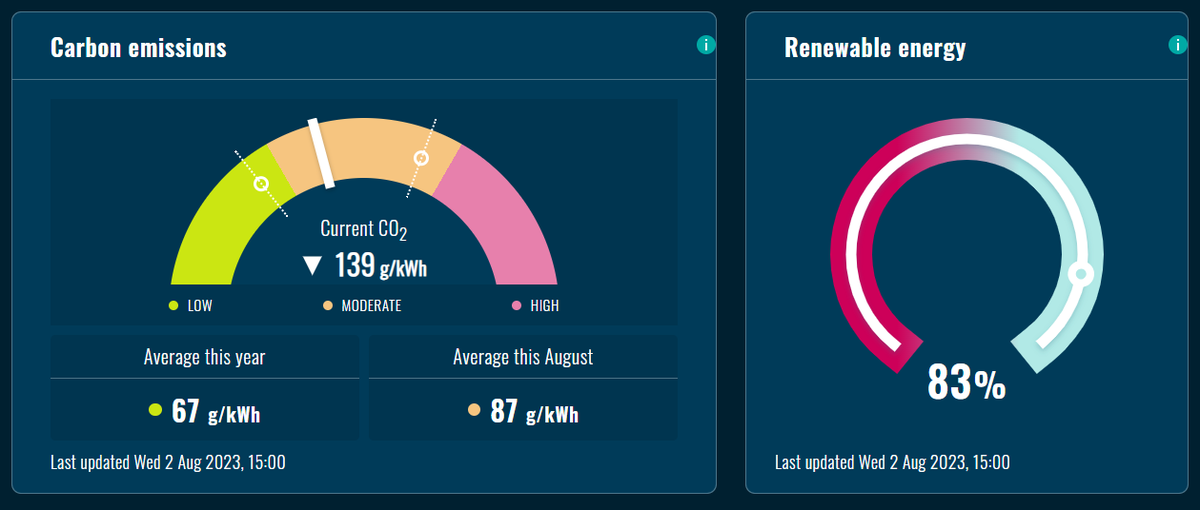We've recently updated our factors which we use to calculate half-hourly emissions across the grid. Our methodology document explains in detail the logic behind these figures but if you're after the TLDR version, here are a few salient points:
We get real time data from all generation plants plugging into the national grid, and we also know how much carbon dioxide equivalent (CO2e) is produced, on average, for each megawatt generated by each plant - this is the emissions factor. It's a fairly simple calculation to then work out the emissions for all the power generated over each half-hour trading period.
CO2e takes into account methane and nitrous oxide that may be produced when burning each fuel type and convert them into carbon equivalent units. However, these equivalents add only a very small amount compared to CO2 – in most cases less than half a percent.
Given the API and carbon emissions dial on our dashboard are intended as a high-level overview of the situation, and that CO2 makes up the vast majority of the emissions total, we currently reference CO2 as our unit and not CO2e.

The factors used in this calculation for thermal generators are based on the fuel type used and the plant's efficiency, also known as the heat rate. For example Whirinaki (WHI2201 WHI0) uses diesel to generate its power with a heat rate of 10906 GJ/GWh as defined by the Ministry of Business Innovation and Employment's (MBIE) 2020 Thermal Stack report. The Ministry for the Environment (MfE) determines diesel as having a fuel factor of 69691 tCO2e/PJ. Adjusting the units and multiplying together gives an emissions fuel factor of 0.760 t/MWh.
Geothermal generators provide emissions factors directly, the value depending on their processes. For example, Ngawha Generation (KOE1101 NGB0) reduce their emissions to basically zero as they reinject carbon dioxide back into the ground.
Huntly’s generation units 1-4 can burn either coal or gas. In order to determine which emissions factor to apply, Genesis supply em6 with fuel split data indicating the percentage of gas or coal used in a trading period. We use that data in the emissions calculation.
Emissions factors will change over time as generators improve their efficiency and processes, and em6 will continue to update them regularly.
Read the full methodology with emissions factors for all thermal and geothermal generators connecting to the grid here: em6 Carbon Intensity Methodology (ems.co.nz) and contact call@ems.co.nz if you have feedback or questions.